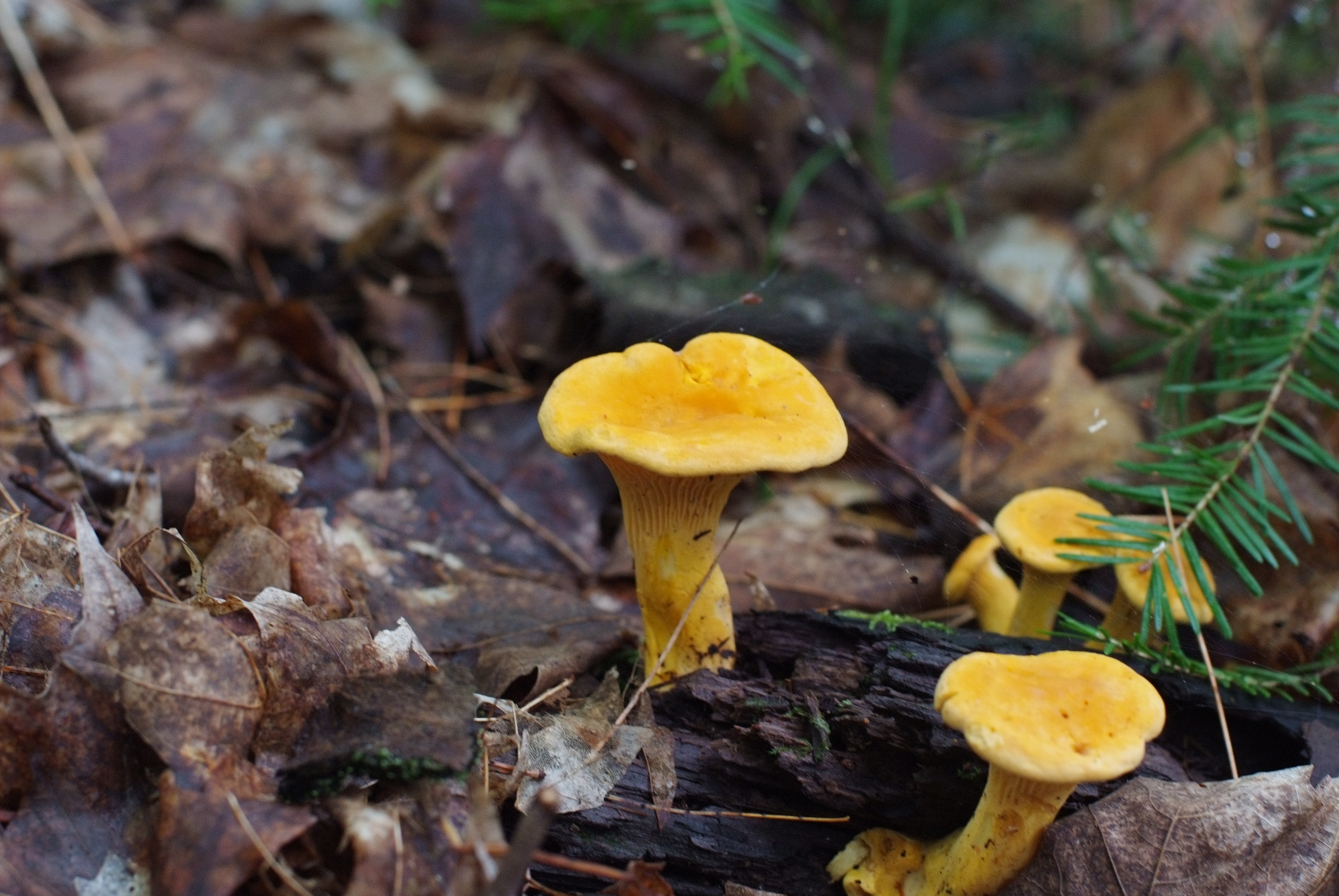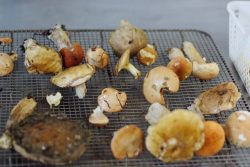 Thats right, mushroom season is fast approaching.
Thats right, mushroom season is fast approaching.

Over the next month thousands of species of mushrooms will “pop” up all across our beautiful province. Well wooded areas are particularly prime mushroom hunting locations.
Before I delve to far into the topic I would like to suggest some further reading and/or identifications books. Local book stores should stock or be able to order in a book called “Mushrooms of Ontario and Northeastern Ontario” by George Barron, a retired professor of Mycology at the University of Guelph. This book is part of the Lone Pine series of publications and is also available at the Cornwall Public Library, along with other mushroom identification guides. Another book that will help to locate where to find mushrooms is the Lone Pine “Trees of Ontario” book.
Mushroom hunting identification is a fun and rewarding experience. Especially cooking them when you return from the bush.
Of particular importance to the cook and forager are the “Morel”, “Chanterelle”, “Bolete”, “Lobster Mushroom”, “Hedgehog”, “Saffron Milk Cap”. and “Oyster”. [Chanterelle img DSCF2940, Boletes DSCF2954]. These species are also particularly easy to identify with few poisonous lookalikes.
All of these mushrooms are wonderful individually, however, mixed together in one dish and they are particularly heavenly.
Mushroom growth is dependent on a number of factors, particularly precipitation, temperature, soil conditions and surrounding foliage. Each mushroom species performs a specific task. Some are symbiotic with the tree/plant they grow on or near. Others are parasitic, feeding off of a living organism, sometimes even other mushrooms. For the most part mushrooms feed off a particular element, for example: rotting wood, leaves or needles, moss, etc. Being aware of what conditions a particular species thrives in will increase your chances of success dramatically.
Before venturing off into the woods I would suggest making sure that it has rained within the past 24-36 hours. Ensure that you have an effective insect repellent, rain plus forest=lots of mosquitoes. I would also suggest a basket for your mushrooms and a pocket knife (to cut the mushrooms from the below ground root structures, and ward of predatory wildlife). Two baskets can also come in handy, one for mushrooms which you know are edible, and the other one for specimens you need to identify further.
NEVER eat a mushroom that you are not 100% sure about. If you stick within the species that I have listed you will be much safer.
Another caveat is to gauge the quality of each individual specimen. This applies especially to Boletes. This group is particularly prone to insect infestaton and softening due to moisture saturation. Specimens that are squishy or show an abundance of snail or mushroom worm activity are better off left alone. However, if they aren’t too bad they may be prime candidates for slicing and drying.
This can be done on a resting rack left on top of a sheet pan to collect the debris that falls off during the process. You simply slice the mushrooms thoroughly and leave them out on a rack in a well ventilated room until completely dehydrated. These mushrooms reconstitute well, or provide a particularly elegant mushroom flavour to any soup or sauce.

Prime mushrooms are best sliced and sauteed. The following recipe is one of my all time favourite treats. I suggest a nice glass of red wine: Pinot Noir, Barolo, or even a robust white such as Reisling or Chardonnay.
1 lb mixed wild edible mushrooms, sliced thinly
2 tbsp olive oil
1 clove garlic, minced
1 sprig fresh thyme, leaves only
2 tbsp butter
non iodized sea salt and pepper to taste (Very important)
In a hot (starting to smoke) 12″ cast iron skillet or heavy bottomed frying pan pour the oil, followed immediately by the mushrooms.
Stir or toss the contents in the pan often, preventing the mushrooms from burning, but allowing some colour on the edges. When they begin to become slightly golden add the rest of the ingredients (butter, garlic, thyme, and seasoning).
Turn off the burner/stove element and allow the flavourings to infuse. You may now serve this on your guests plates. I suggest a grating of fresh Parmigiano Reggian1o or Pecorino Romano cheese (see Farm Boy).
As for sea salt, the most inexpensive (cheaper than table salt) box of sea salt can be found in the “International” aisle at any Food Basics. It is on the Italian shelf and is made by Aurora. There are two products of interest, Fine and Coarse Mediterranean Sea Salt.
I suggest the fine for the majority of your seasoning, and coarse salt as a finishing salt or to be used on grilled/pan seared meats. Seasoning is very important.
Do not be afraid of salt. It is imperative that we as consumers start pushing the use of non-iodized salts. It is these salts along with nitrates in smoked and cured meats (deli, bacon) and ALL processed foods that is causing heart conditions such as high blood pressure. Just food for thought.
Now Happy Hunting, and remember, utilize your mushroom guide as well as reputable online sources (see George Barrons website) concerning edibility.Would anyone be interested in a wine drinkers guide to the French Regions for the next article?
Email your questions to Chef Kretz at info@cornwallfreenews.com or canvid@hotmail.com
please visit our sponsors:

I truly loved your article! I have been gathering glass for umpteen ages and yet learn different things everyday. Do you know where I could discover more about this? I’m really curious.